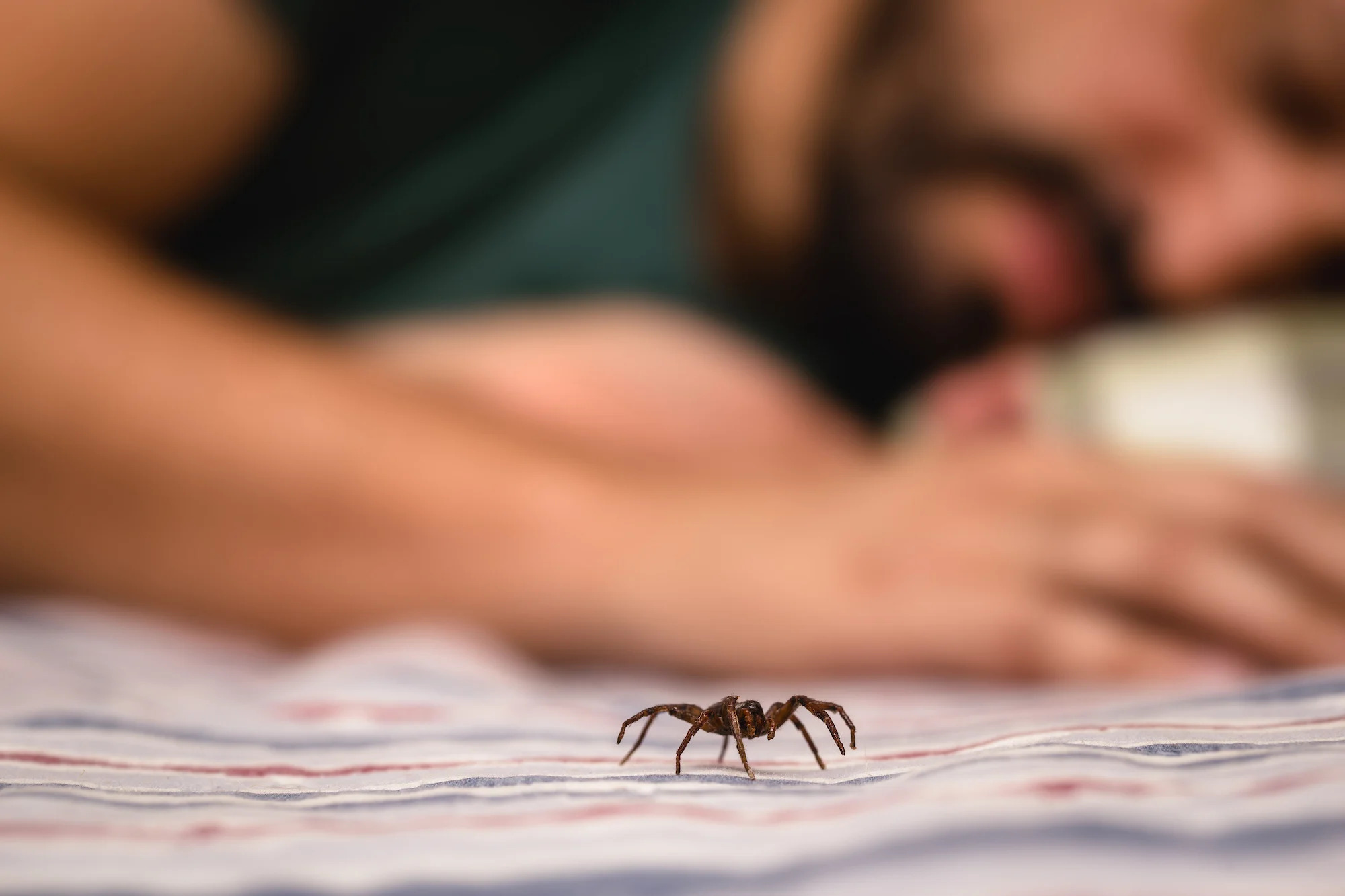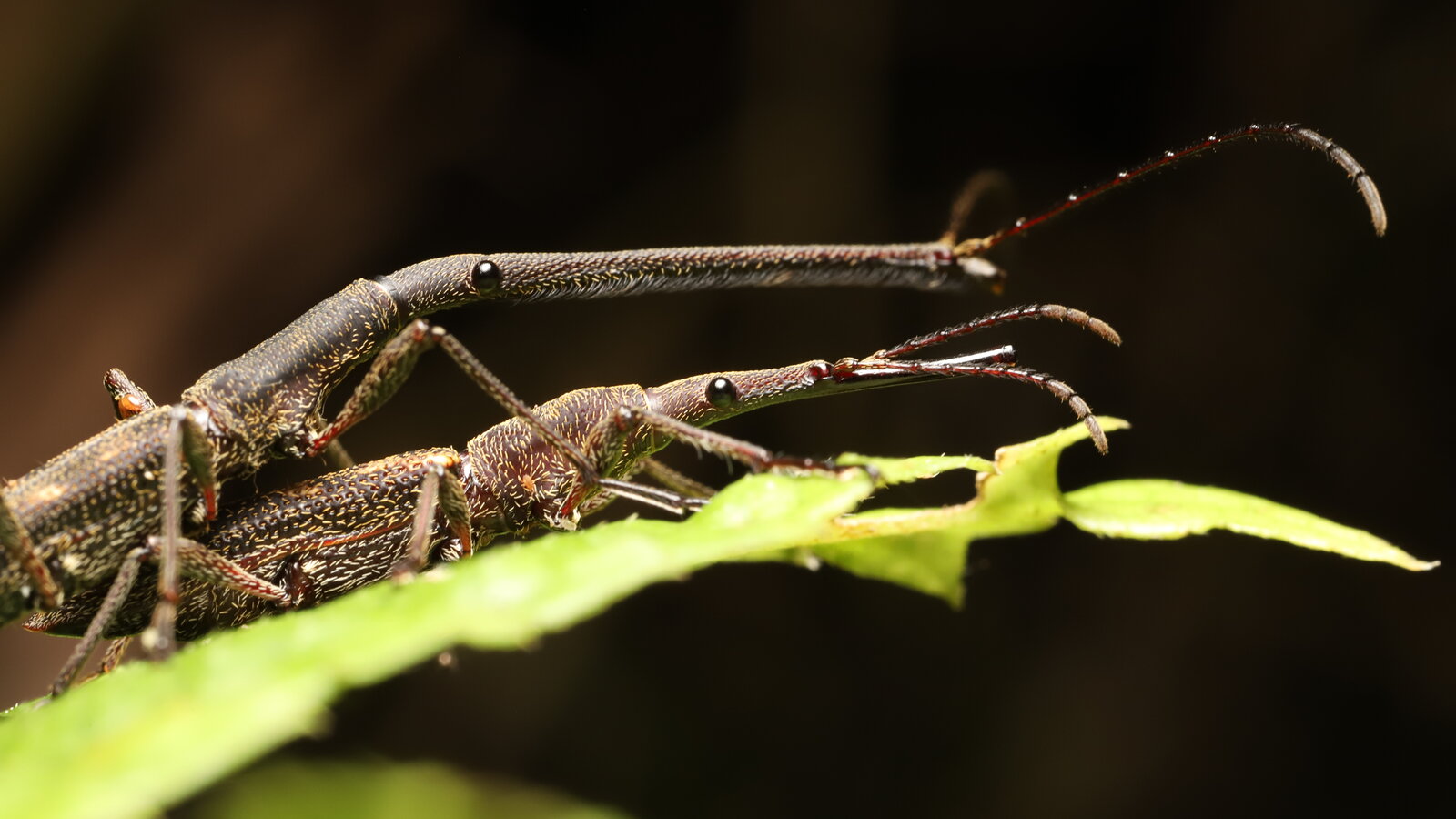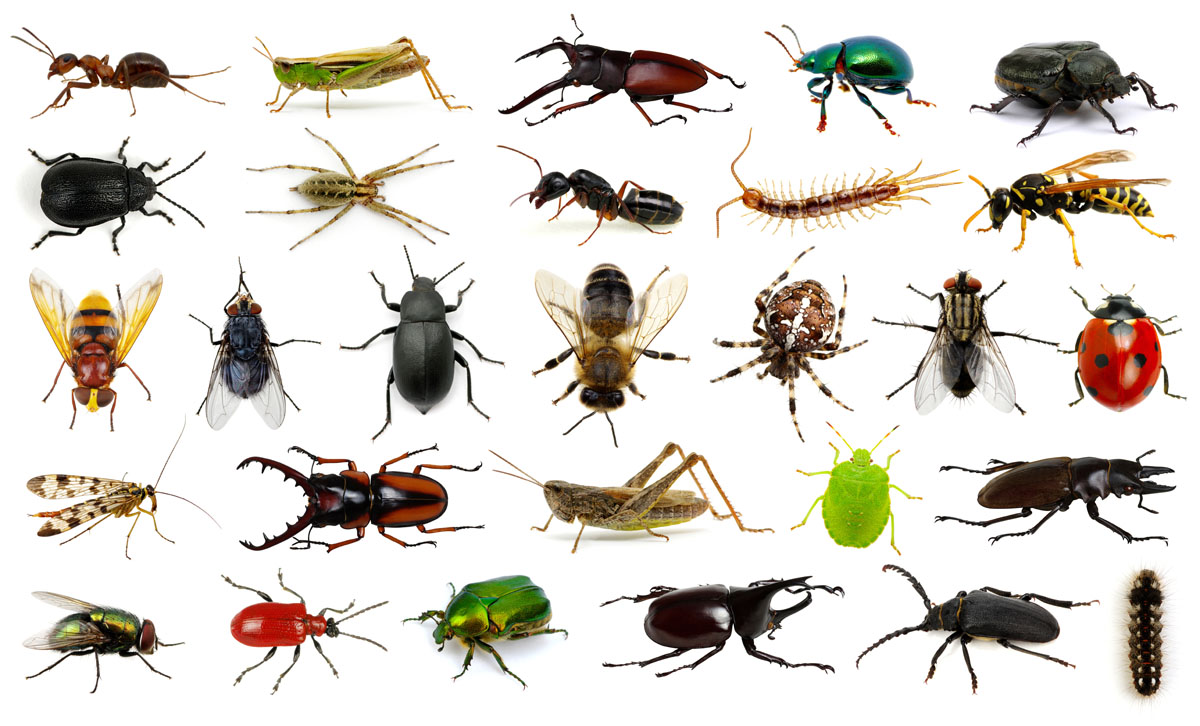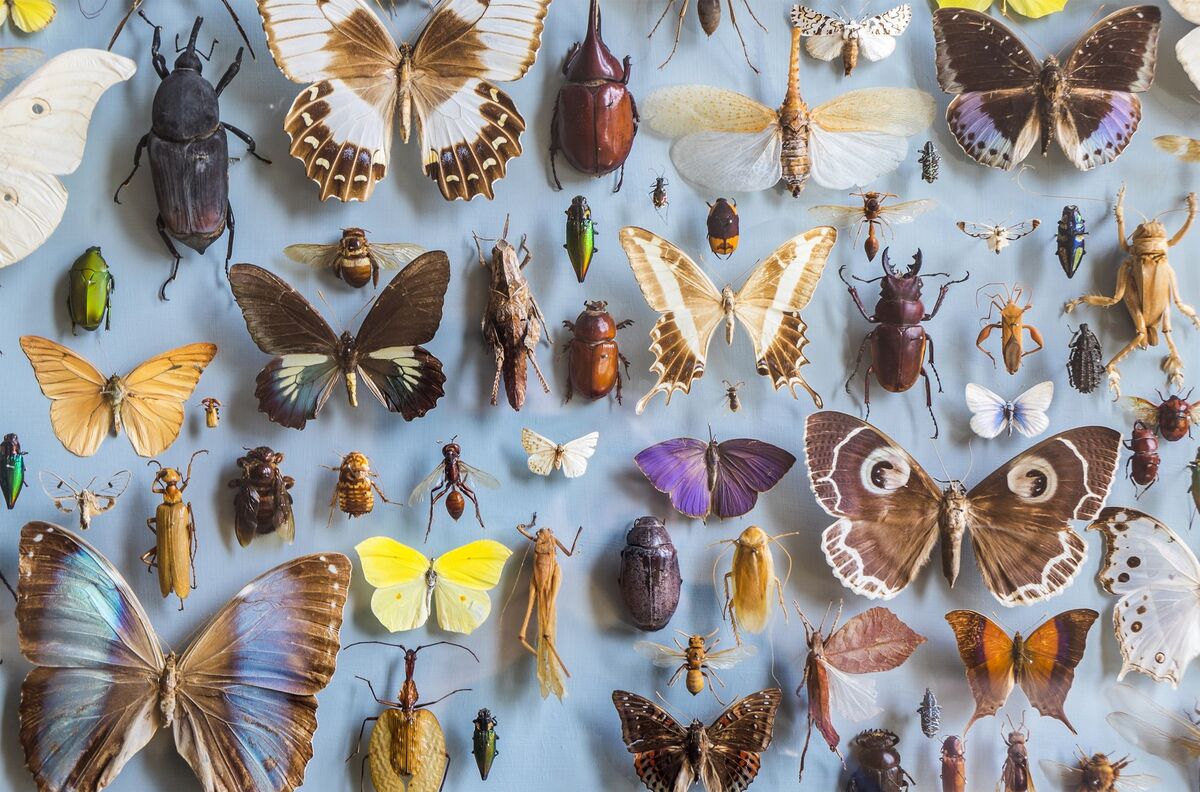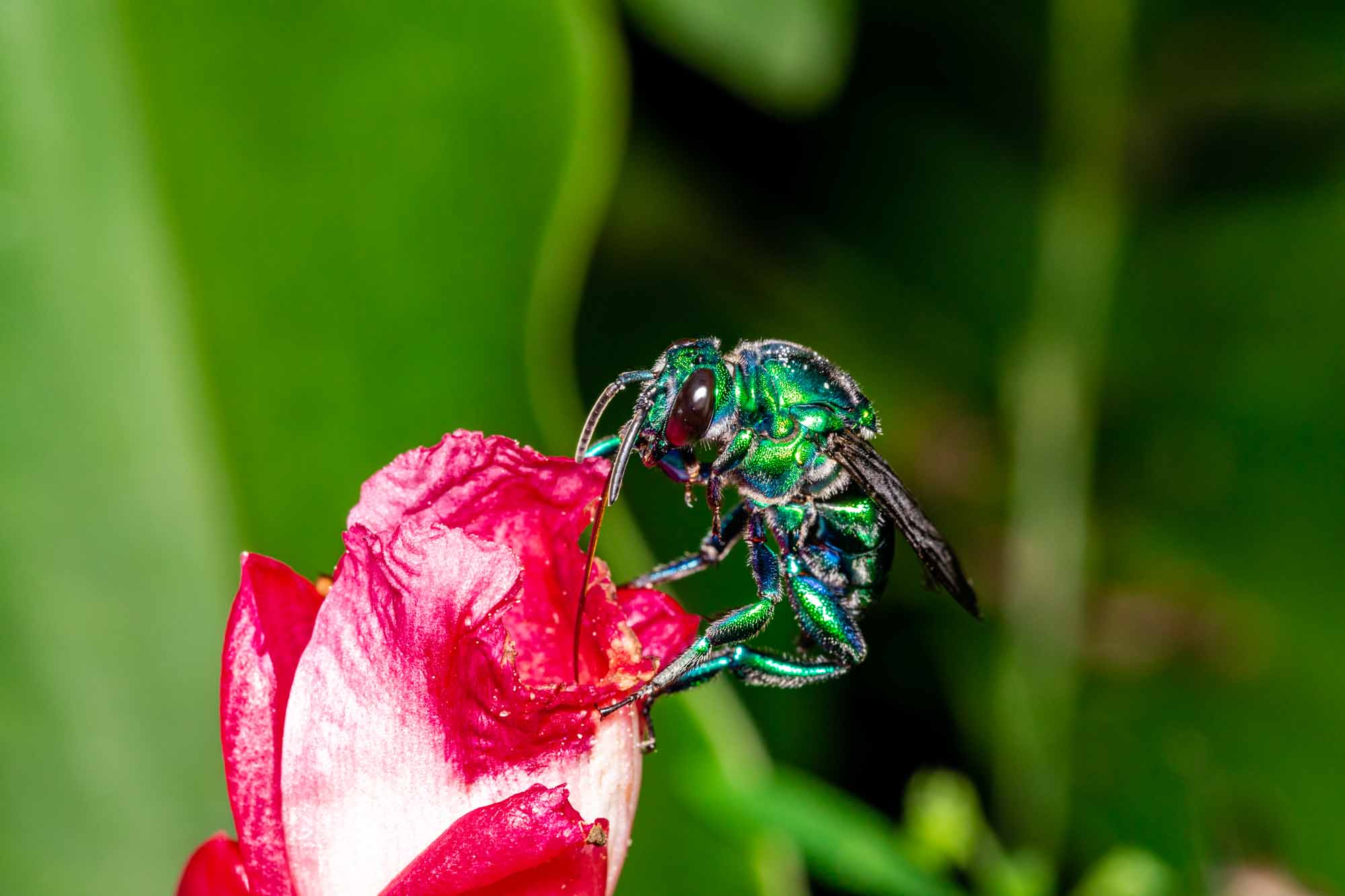Home>Gardening News and Trends>Latest News>How Many Body Parts Do Insects Have?
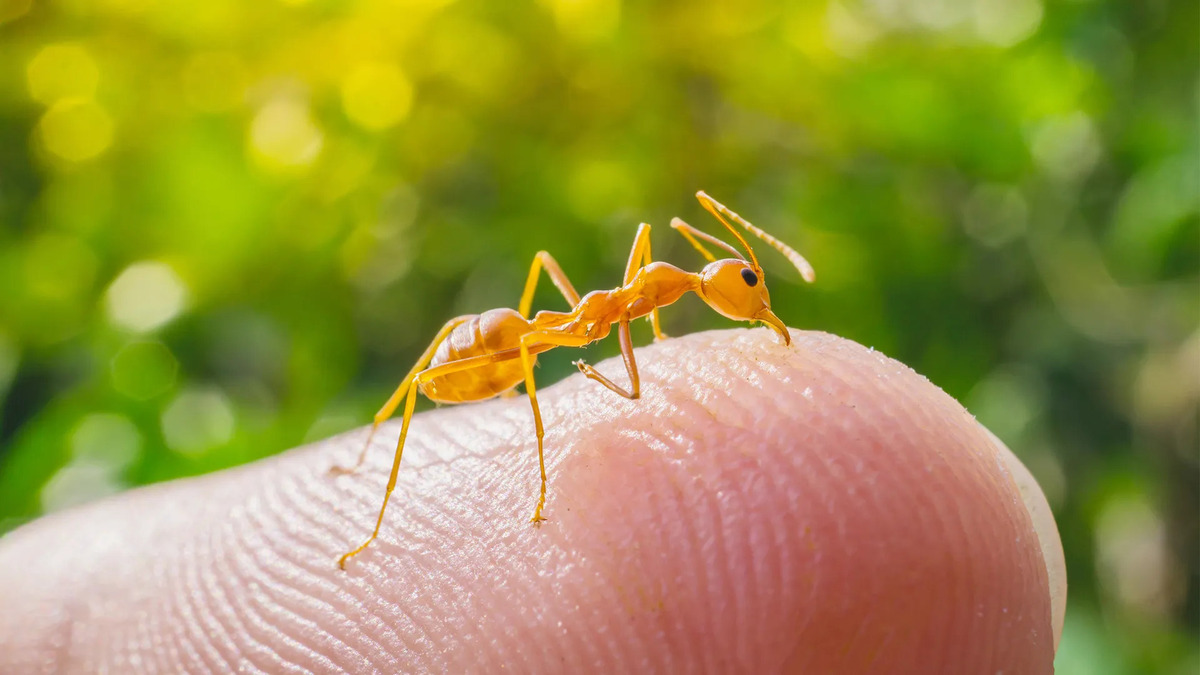

Latest News
How Many Body Parts Do Insects Have?
Modified: January 22, 2024
Discover the latest news on how many body parts insects have and unravel the fascinating world of insect anatomy. Stay updated with the most recent discoveries and facts.
(Many of the links in this article redirect to a specific reviewed product. Your purchase of these products through affiliate links helps to generate commission for Chicagolandgardening.com, at no extra cost. Learn more)
Introduction
Insects are fascinating creatures that inhabit nearly every corner of our planet. They are incredibly diverse and have evolved a variety of unique adaptations to survive in different environments. One of the remarkable aspects of insects is their body structure, which sets them apart from other animals.
While it may be easy to recognize an insect by its six legs, there is much more to their anatomy. In fact, insects have a complex body structure composed of various parts that serve different functions. Understanding these body parts can provide us with insights into the remarkable capabilities of these tiny creatures.
In this article, we will delve into the world of insect anatomy and explore the different body parts that make up an insect’s body. From the head to the abdomen, each segment plays a crucial role in the insect’s survival and everyday activities. Let’s take a closer look at these fascinating creatures and discover the wonders of their intricate body structures.
So, how many body parts do insects have? To answer this question, we will examine each major section of an insect’s body in detail. From the head to the abdomen, each part contributes to the insect’s overall form and function. Join us on this exploration of the insect world and gain a deeper understanding of these incredible creatures.
Head
The head of an insect is the frontmost part of its body and contains several important structures. One of the most prominent features of the insect’s head is its pair of compound eyes. These eyes are made up of thousands of individual lenses, allowing insects to perceive movement and shapes with remarkable clarity. Some insects, such as flies, have large compound eyes that cover most of their head, providing them with a wide field of vision.
In addition to compound eyes, insects also have one or two simple eyes called ocelli. Unlike compound eyes, ocelli detect changes in light intensity and help insects orient themselves. These simple eyes are particularly important for insects that navigate using the sun or other sources of light.
Another prominent feature of the insect’s head is its pair of antennae. Antennae are sensory organs that play a crucial role in an insect’s ability to perceive its environment. They are covered in tiny hairs and are used to detect chemical signals, vibrations, and even changes in temperature. Additionally, antennae can serve as balance organs, helping insects maintain stability during flight or movement.
The head also houses the insect’s mouthparts, which vary depending on the insect’s diet. Some insects have mandibles, akin to jaws, which they use for biting and chewing solid food. Others have a proboscis, a long, tubular mouthpart used for sucking nectar or piercing plant tissues to access sap. The diversity in mouthparts reflects the incredible adaptability of insects and their ability to exploit various food sources.
Overall, the head of an insect is a remarkable structure that houses essential sensory organs and specialized mouthparts. These features allow insects to navigate their environment, find food, and communicate with others of their kind. The intricate design and functionality of the insect’s head contribute to their remarkable success and adaptability in a wide range of habitats.
Antennae
The antennae of an insect are remarkable sensory organs that play a crucial role in the insect’s ability to perceive its environment. These elongated appendages are located on the insect’s head and come in various shapes and sizes, depending on the species.
Antennae are covered in tiny hairs, called sensilla, which are responsible for detecting a wide range of stimuli. These sensilla can perceive different types of information, including chemical signals, vibrations, changes in temperature, and even air currents. Insects rely on their antennae to gather information about their surroundings and make critical decisions in their daily lives.
One of the primary functions of antennae is the detection of chemical signals, also known as pheromones. Pheromones are chemical substances that insects release to communicate with others of their species. By detecting these pheromones, insects can locate potential mates, mark territories, or even signal danger to their kin. The sensitivity of the antennae to pheromones is astounding, allowing insects to detect minute amounts of these chemical signals over long distances.
Antennae also play a role in sensory perception beyond pheromones. For example, they can detect vibrations in the air or on surfaces, providing insects with information about the presence of predators or potential prey. Some insects, such as mosquitoes and flies, have specialized antennae that can perceive changes in body heat, enabling them to locate warm-blooded hosts for blood-feeding purposes.
Furthermore, the movement of the antennae helps insects maintain balance and spatial awareness. In flying insects, antennae serve as crucial stabilizers during flight, allowing them to respond quickly to changes in air currents. Antennae also aid in navigation, helping insects return to their nest or hive by sensing the position of the sun or the Earth’s magnetic field.
In summary, the antennae of insects are remarkable sensory organs that enable them to gather essential information about their environment. Whether through detecting chemical signals, perceiving vibrations, or aiding in navigation, the antennae play a critical role in an insect’s survival and success. Their incredible sensitivity and adaptability highlight the remarkable capabilities of these tiny creatures.
Eyes
The eyes of insects are truly fascinating and are one of their most prominent features. Unlike human eyes, which have a single lens, insects have compound eyes that are made up of numerous individual facets, known as ommatidia.
Compound eyes give insects a wide field of vision and allow them to detect movement and shapes with incredible precision. Each ommatidium in the compound eye acts as a separate light-detecting unit, contributing to the overall image that the insect perceives. The number of ommatidia in an insect’s compound eyes can vary significantly, ranging from a few hundred to tens of thousands, depending on the species.
The arrangement of ommatidia in the compound eye can also vary. Some insects have eyes that are more spherical, providing a broad view of their surroundings. Others have elongated eyes that offer a more focused field of vision, ideal for tracking fast-moving prey or predators.
One of the remarkable aspects of compound eyes is their ability to perceive motion at an incredible speed. Insects, such as flies, are capable of detecting movements that are too fast for the human eye to see, allowing them to react swiftly to potential threats or prey.
While compound eyes excel in detecting movement, they are not well-suited for perceiving fine details. Insects depend on other sensory organs, such as their antennae, to gather additional information about their surroundings.
In addition to compound eyes, some insects also have simple eyes, known as ocelli. Ocelli are usually located on the top of the head, and while they can’t form detailed images like compound eyes, they play a role in detecting changes in light intensity. Ocelli help insects orient themselves and can be particularly useful for species that rely on sunlight or other sources of light for navigation.
The eyes of insects are remarkable structures that provide them with a different perspective on the world. The ability to detect movement with precision, combined with the additional information gathered from other sensory organs, allows insects to navigate their environment effectively. The diversity in eye structure among different insect species highlights the incredible adaptability and specialization that has contributed to their success.
Mouthparts
The mouthparts of insects are incredibly diverse and specialized, reflecting the range of diets and feeding strategies that different species have evolved. From biting and chewing to sucking and piercing, the mouthparts of insects have adapted to suit their specific nutritional needs.
Some insects, such as beetles and grasshoppers, have mandibulate mouthparts, which are well-suited for biting and chewing solid food. Mandibles are strong, tooth-like structures that insects use to tear and grind their food. These mouthparts enable insects to feed on a variety of plant materials, including leaves, stems, and seeds.
On the other hand, there are insects with piercing-sucking mouthparts. Mosquitoes and fleas, for example, have elongated stylets that they use to pierce the skin of their hosts and feed on blood. These mouthparts are specifically adapted for extracting fluids, whether it be blood or plant sap.
Butterflies and moths have a unique type of mouthpart known as a proboscis. This long, tubular structure is coiled when not in use and can be extended to reach deep into flowers to feed on nectar. The proboscis acts as a straw, allowing the insect to suck up the sweet liquid from the flowers.
Some insects have modified mouthparts for specialized diets. For instance, bees have a proboscis-like tongue called a glossa, which they use to sip nectar from flowers. Bees also have specialized structures called pollen baskets on their hind legs, which allow them to collect pollen to feed their young.
Another fascinating example of modified mouthparts is found in honeybees and other social insects. These insects have developed a unique structure called a mandibular or salivary gland, which produces enzymes necessary for processing and storing food. In addition to gathering nectar, honeybees collect plant resins and mix them with saliva to create a substance known as propolis, which they use to seal their hives and protect them from pathogens.
The wide array of mouthparts seen in insects reflects their remarkable adaptability to different ecological niches and food sources. Insects have evolved diverse feeding strategies, allowing them to thrive in various habitats and take advantage of available resources.
Thorax
The thorax is the middle section of an insect’s body and plays a crucial role in its mobility and locomotion. It is composed of three segments: the prothorax, the mesothorax, and the metathorax.
Each segment of the thorax bears a pair of legs, making a total of six legs for most insects. These legs are jointed and allow insects to move through various terrains, including crawling, walking, jumping, or even swimming. The structure of the legs differs depending on the insect’s lifestyle and adaptations. For example, grasshoppers have long hind legs that are specialized for jumping, while beetles have stout and strong legs suitable for digging and burrowing.
In addition to legs, the thorax also houses the wings of flying insects. The mesothorax and metathorax are responsible for holding and controlling the wings. Most insects have two pairs of wings, with the forewings typically being thicker and more rigid compared to the hindwings. This wing structure allows for efficient aerodynamic flight in species like butterflies, bees, and dragonflies.
However, not all insects can fly. Some species have lost their wings through evolutionary adaptations to a specific environment or lifestyle. For example, certain ants and beetles have wings that have been reduced or completely absent, as they have become primarily ground-dwelling or burrowing insects.
Insects have intricate flight mechanisms enabled by their thoracic muscles. These muscles contract and relax, allowing the wings to move in coordinated patterns. Flight styles can vary, with some insects capable of rapid hovering, while others are adept at long-distance travel.
The thorax also contains important internal structures, such as the respiratory system. Insects breathe through a series of tiny tubes called tracheae, which transport oxygen directly to their organs and tissues. These tracheae are connected to small openings called spiracles located on the sides of the thorax. Air enters and exits the insect’s body through these spiracles, allowing for efficient gas exchange.
Overall, the thorax is a vital section of an insect’s body, responsible for providing support, mobility, and the ability to fly for those species that possess wings. The specialization and adaptations found in the thorax allow insects to thrive in diverse ecosystems, demonstrating the remarkable versatility and resilience of these fascinating creatures.
Legs
The legs of insects are incredible adaptations that allow them to navigate their environment, interact with their surroundings, and perform various tasks essential for their survival. Insects have six legs, each with its own specialized structure and function.
The legs of insects are composed of multiple segments, usually including the coxa, trochanter, femur, tibia, and tarsus. These segments are connected by flexible joints, allowing for a wide range of movements.
The structure of insect legs can vary significantly depending on the insect’s lifestyle and adaptations. For example, beetles have stout and strong legs that are specialized for digging and gripping surfaces. Grasshoppers have long hind legs that enable them to jump incredible distances, while insects that are adept at climbing typically have legs with adhesive pads or hooks that allow them to grip onto various surfaces.
In addition to movement, the legs of insects serve various other functions. They are often equipped with sensory structures, such as tiny hairs called setae or sensilla, which help insects perceive their environment. These sensory structures allow insects to detect vibrations, changes in temperature, and even chemical signals.
In many insect species, the legs are also involved in grooming and maintaining hygiene. Insects use their legs to clean their bodies, removing dirt, parasites, and debris. They may also use specialized structures, such as combs or spines, to assist in this grooming process.
In some insects, the legs have been modified for particular tasks. For example, in honeybees, the hind legs are equipped with specialized structures called pollen baskets, or corbiculae, which are concave areas surrounded by long hairs. These pollen baskets allow bees to collect and transport pollen back to their hive for feeding their young.
The legs of insects are incredibly versatile and play a vital role in their survival and daily activities. They enable insects to move efficiently, traverse different terrains, interact with their environment, and perform specialized tasks necessary for their survival. The diversity in leg structures among different insect species highlights their remarkable adaptability in various ecological niches and reflects the intricacies of their evolution.
Wings
Wings are one of the most remarkable features of insects, giving them the ability to fly and explore the world around them. While not all insects have wings, many species have evolved this adaptation, which has contributed to their incredible success and widespread distribution.
The structure and function of insect wings vary across species, reflecting their unique lifestyles and evolutionary adaptations. Wings are typically found on the mesothorax and metathorax, the middle and hind segments of the insect’s thorax.
The wings of insects are thin, lightweight, and covered in a transparent or translucent membrane called the wing membrane or wing blade. This delicate structure is supported by a network of veins or wing veins, which provide rigidity and strength while allowing for flexibility during flight.
Insect wings play a crucial role in their mobility and survival. They enable insects to travel long distances, find mates, locate food sources, and escape from predators or unfavorable conditions. The ability to fly provides insects with tremendous opportunities for resource exploitation and colonization of diverse habitats.
Flight styles can vary among insects, ranging from slow and hovering flight to fast and agile maneuvers. Some insects, like butterflies, rely on a combination of flapping and gliding to achieve sustained flight. Others, such as hoverflies, are adept at hovering in mid-air, allowing them to feed on nectar from flowers with precision. Additionally, dragonflies and damselflies are known for their incredible aerial acrobatics, performing intricate aerial displays during courtship or territorial disputes.
Wings also offer advantages beyond flight. In certain insects, like grasshoppers and crickets, wings may function as communication tools. Males produce sounds by rubbing their wings together, creating a unique calling song to attract mates or establish territories.
While wings are remarkable adaptations, not all insects can fly. Some species have lost their ability to fly and have evolved wings that are reduced in size or completely absent. These wingless insects have adapted to different modes of transportation, such as jumping or crawling, to move and navigate their environment.
The evolution of wings in insects has had a profound impact on their ability to explore, adapt, and thrive in diverse environments. Their mastery of flight has allowed insects to occupy vast ecological niches and play significant roles in ecosystems as pollinators, decomposers, and predators. The diversity in wing structures and flight abilities among different insect species serves as a testament to the remarkable adaptations that enable these small creatures to conquer the skies.
Abdomen
The abdomen is the posterior section of an insect’s body and is typically composed of multiple segments. It plays a vital role in various physiological functions and is involved in reproduction, digestion, respiration, and defense.
One of the primary functions of the abdomen is reproduction. In female insects, the abdomen houses the reproductive organs, including ovaries and a specialized structure called the ovipositor. The ovipositor is used for depositing eggs into suitable environments, such as in the soil, on plants, or in water. The abdomen also provides protection for developing eggs, ensuring their viability until they hatch.
In male insects, the abdomen is involved in producing and transferring sperm. Male reproductive structures, such as the testes and accessory glands, are located within the abdomen. During mating, the male transfers sperm to the female through specialized structures, such as claspers or genitalia, located at the posterior end of the abdomen.
In addition to reproduction, the abdomen is crucial for digestion and excretion. Insects have a highly efficient digestive system, comprising various organs within the abdomen, including the foregut, midgut, and hindgut. Food is processed and nutrients are absorbed in the midgut, while waste products are eliminated through the hindgut. The abdomen also houses Malpighian tubules, which function as excretory organs, filtering waste materials from the insect’s hemolymph (insect equivalent of blood) and transporting them to the hindgut for elimination.
The abdomen also plays a role in respiration in some insects. While insects primarily breathe through tiny tubes called tracheae, certain aquatic insects can extract oxygen from water through specialized structures in their abdomen. These structures, known as gills or plastrons, allow the insects to obtain oxygen from their aquatic habitats.
Furthermore, the abdomen in some insect species has evolved specialized defense mechanisms. Some insects, such as bees and wasps, have a modified stinger at the posterior end of their abdomen, which they use for defense against predators or to inject venom into prey. Other insects, such as beetles, have glandular structures within the abdomen that secrete toxic or foul-smelling substances as a deterrent.
The abdomen of insects is a multifunctional structure that plays important roles in reproduction, digestion, excretion, respiration, and defense. Its diverse adaptations and specialized structures reflect the incredible diversity and versatility of insects as a group.
Conclusion
Insects possess a remarkable diversity of body parts that enable them to navigate and thrive in their respective environments. From their intricate head structures, with compound eyes and antennae, to their specialized mouthparts, the anatomy of insects is a testament to their adaptability and evolutionary success.
The thorax, with its legs and wings, allows insects to move, fly, and explore the world around them. Insects have evolved various leg structures for different modes of locomotion, while the presence or absence of wings grants them the ability to travel long distances or adapt to specific environments.
The abdomen serves essential roles in reproduction, digestion, excretion, respiration, and defense. Male and female reproductive organs within the abdomen ensure the continuation of insect species through mating and egg deposition. The digestive system, encompassing different organs, facilitates nutrient absorption and waste elimination. Certain insects have specialized respiratory structures in their abdomen, allowing them to extract oxygen from water when needed. Lastly, the abdomen may possess defensive adaptations, such as stingers or glandular structures, to protect against predators.
Understanding the intricate body structures of insects provides us with insights into their remarkable capabilities and adaptations. It highlights their resilience, versatility, and ability to thrive in a wide range of habitats. From the buzzing bees collecting nectar to the graceful flight of butterflies, the complexities of insect anatomy contribute to their vital ecological roles as pollinators, decomposers, and predators.
Next time you encounter an insect, take a moment to appreciate the incredible design and functionality of their body parts. From their antennae sensing the world around them, to their wings propelling them through the air, each feature serves a distinct purpose in the fascinating world of insects.

